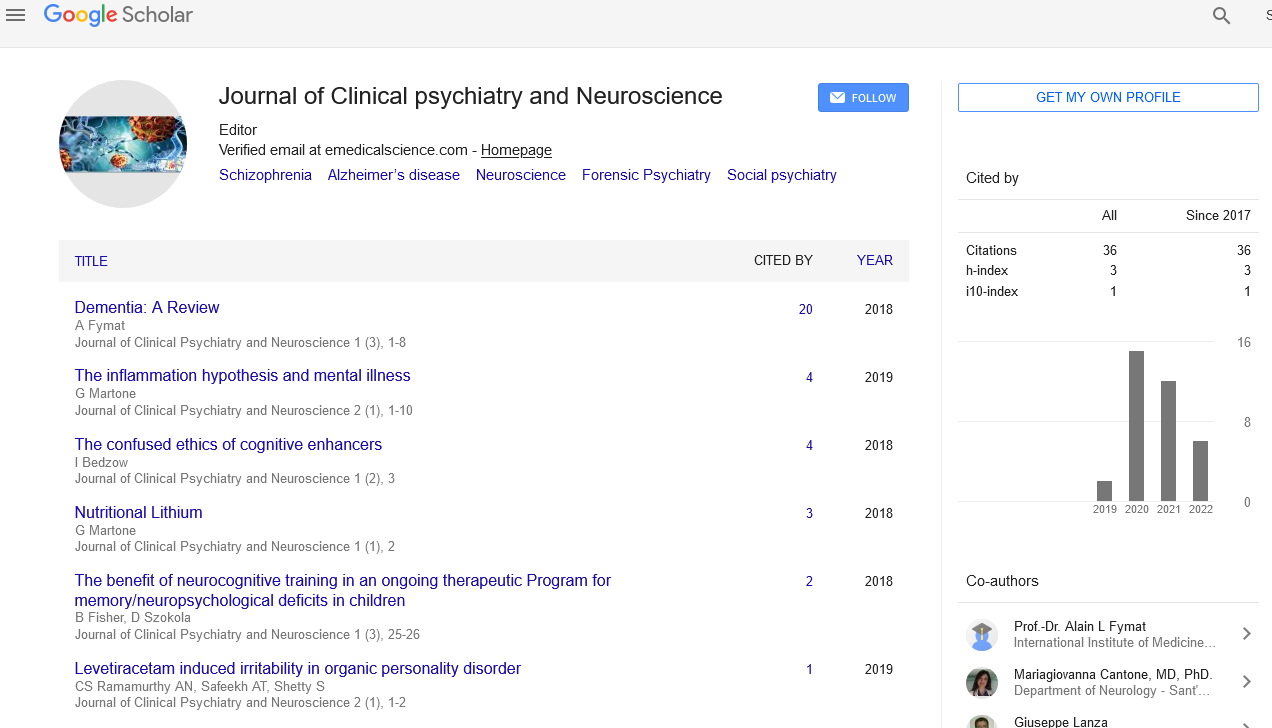brief trauma focused cognitive behavior therapy
Received: 02-Dec-2021 Accepted Date: Dec 10, 2021; Published: 22-Dec-2021
Citation: Piccoli L (2021) Brief Trauma Focused Cognitive-Behavior Therapy. J Clin Psychiatry Neurosci. 2021 4(7)
This open-access article is distributed under the terms of the Creative Commons Attribution Non-Commercial License (CC BY-NC) (http://creativecommons.org/licenses/by-nc/4.0/), which permits reuse, distribution and reproduction of the article, provided that the original work is properly cited and the reuse is restricted to noncommercial purposes. For commercial reuse, contact reprints@pulsus.com
Introduction
The primary purpose for the trails was to test if a short trauma focused cognitive-behavior therapy (prolong exposure; PE) gave inside 72 h after an trauma could be successful in diminishing the frequency of post-traumatic pressure disorder (PTSD), replicating and extending discoveries from a previous trails. After a pilot study (N=10), which demonstrated practical and deliverable study systems and intercessions, we subsequently launched a RCT with an objective example size of 352 participants randomized to either three meetings PE or non-mandate support. Because of an unanticipated significant revamping at the hospital, the RCT was stopped after 32 included participants. In this paper, we feature snags and Lesson learned from our achievability work, important for preventive psychological intercessions for PTSD in emergency settings. One significant finding was the high level of whittling down: just 78% and 34% separately returned for the two months and six-month evaluations. There were additionally troubles in arriving at qualified patients following the occasion. Based on our experience, we visualize that elective models of execution may conquer these hindrances, for instance, with distant conveyance of the two evaluations and treatment, joined with various enrollment methods. Lesson learned from this ended RCT are discussed in depth.
Psychologically traumatic mishaps will influence around 70% of the population. A clinically significant extent, an expected 5.6% in Sweden, may foster post-traumatic pressure disorder (PTSD), which incorporates indications of re-encountering, evasion, cogitative and state of mind changes, and hyperarousal. PTSD is a detrimental condition as it is associated with increased risk of suicide, drug and alcohol dependence, and sick leave, and increased somatic problem including neurological, vascular, respiratory, gastrointestinal, and immune system infections. The pilot investigation of 10 participants and the ensuing huge scope trails utilized an indistinguishable randomized controlled plan and methodology. Study participants were hospital patients who had experience a conceivably traumatic event inside the most recent 72 hours. Participants were dispensed to either altered PE or a control condition.
The current study was at initially designed as an as a preventive mediation for PTSD trails. After a pilot trails, we meant to select 352 patients at the ED in a RCT to test the impacts of adjusted PE contrasted and a functioning control condition. The RCT began with a reasonable enlistment pace of 30% of going to patients however was suspended when the hospital went through unexpected major authoritative changes and began to treat just seriously harmed patients, prompting a radical decrease in the qualified number of patients that could be enrolled. We considered this regular clinic approach a significant strength in the study as it could improve execution after concentrate on consummation. The dependence on staff and foundation at one explicit hospital lamentably turned into a significant impediment in this study as enlistment rates fell essentially during the re-association. Looking back, we might have circumvented the problem of enlisting patients on the off chance that we had fostered a foundation and study strategies outside standard medical hospital schedules that had the option to work autonomously of hierarchical changes inside the medical hospital.





